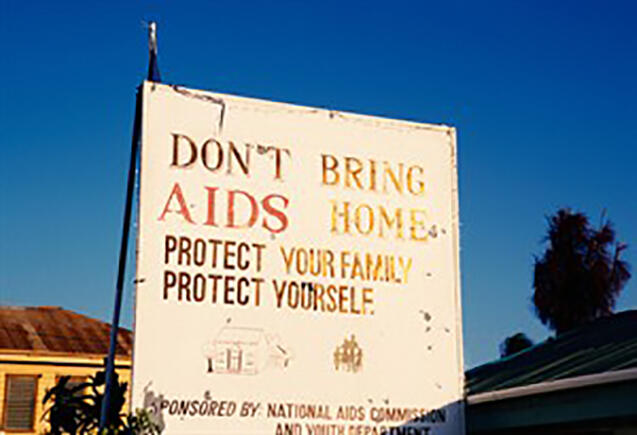
LSTM’s Seminar Series continued this week with a talk from Dr Heidi van Rooyen of the Human Sciences Research Council (HSRC), South Africa. Her presentation, entitled “Zooming in and out: Explorations of HIV risk, responsibility, intimacy and love in rural South Africa”, was introduced by LSTM’s Dr Miriam Taegtmeyer.
She began by contextualising the issue of HIV in South Africa, where an estimated 6.4 million people are living with HIV, roughly 12.3% of the population being infected. There is a high prevalence in adults aged 15 to 49 and ratio of women to men infected is 23.3 to 13.3. Dr van Rooyen explained that previous studies into HIV risk management focussed on the individual’s responsibility to modify behaviour, expected rational thinking and promoted technologies as the answer to the problem with less of a focus on emotions such as love, trust and faithfulness. However this study, a community based randomised trial looking at 48 communities in 5 study sites, four in Africa and one in Thailand, this included her study site in Vulindlela in Rural South Africa, aimed to look deeper at how women manage the risk of HIV in context of their intimate sexual relationships in areas of high prevalence. Each study site started with 126 people who were interviewed on four occasions over 30 months, with many dropping out of the study as time went on.
Focussing on the women, results of the study showed that trust and faithfulness were critically important. Similar messages that were highlighted throughout the interviews illustrating that women held realistic expectations for their relationships, that without blame they expressed the sentiment that “boys will be boys” but were happy in many cases to take charge and instigate conversations about risk. Perception of risk was found to depend on the relationship type, either permanent, casual or knowledge that other parties were involved. What came across strongly was the perceived safety of primary relationships, where condoms were thought about differently, particularly in the cases of married women with children.
To illustrate her results Dr van Rooyen used the case study of 26-year-old Nolwazi, whose sister had died of HIV/AIDS. Across the four interviews, although untested until the last occasion, Nolwazi assumes that she is HIV positive. She describes that she insisted on using condoms at first, but that when the relationship moved on she had unprotected sex. When her partner later discloses that he is HIV positive she describes that she hated him but still loved him and couldn’t be sure that she wasn’t already infected as she had more than one partner previously. In the end she describes how she has come to terms with his disclosure and considers him more favourably because she sees him as having a conscience.
Overall the study results show how women living in areas of high prevalence weigh up the risks of HIV. The results show that there is little denial, that women do not see the situation with “rose coloured glasses” but can make a realistic appraisal of risk. However they also show that this is tricky in the face of a more serious relationship with women trying to maximise intimacy while minimizing risk, and many finding that unprotected sex is a risk worth taking. Dr van Rooyen concluded that HIV programmes currently discounted the irrationality of emotion and love and how these impact on risk management. Technical solutions are clearly not enough to prevent women (and men) becoming infected with HIV and the hope is that these results bring a deeper understanding of these features which can help to frame future interventions.